Mohamed M. Sabry Aly
From Algorithm to Hardware: A Survey on Efficient and Safe Deployment of Deep Neural Networks
May 09, 2024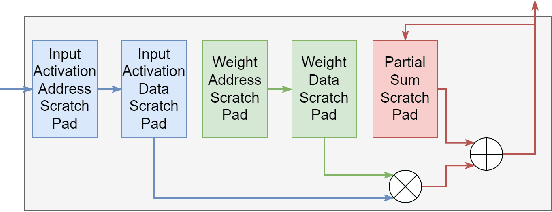
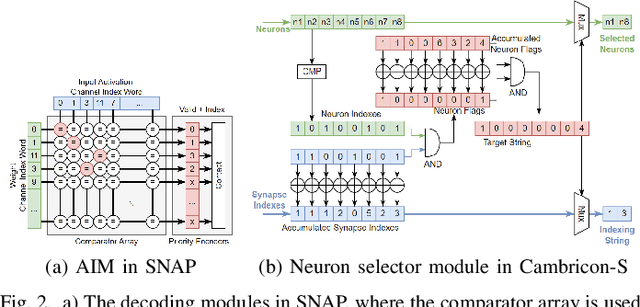
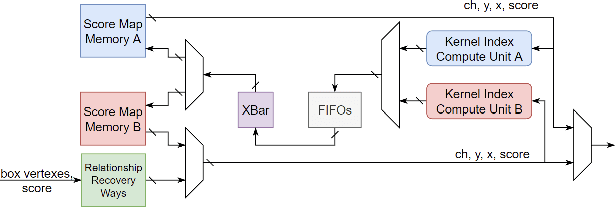
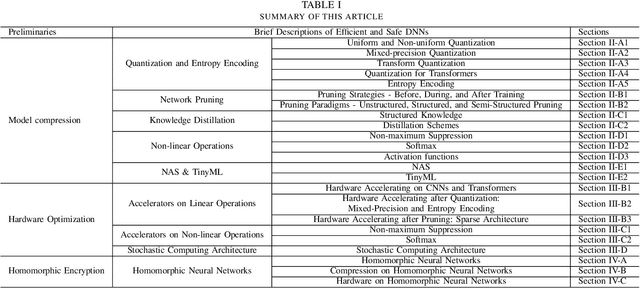
Abstract:Deep neural networks (DNNs) have been widely used in many artificial intelligence (AI) tasks. However, deploying them brings significant challenges due to the huge cost of memory, energy, and computation. To address these challenges, researchers have developed various model compression techniques such as model quantization and model pruning. Recently, there has been a surge in research of compression methods to achieve model efficiency while retaining the performance. Furthermore, more and more works focus on customizing the DNN hardware accelerators to better leverage the model compression techniques. In addition to efficiency, preserving security and privacy is critical for deploying DNNs. However, the vast and diverse body of related works can be overwhelming. This inspires us to conduct a comprehensive survey on recent research toward the goal of high-performance, cost-efficient, and safe deployment of DNNs. Our survey first covers the mainstream model compression techniques such as model quantization, model pruning, knowledge distillation, and optimizations of non-linear operations. We then introduce recent advances in designing hardware accelerators that can adapt to efficient model compression approaches. Additionally, we discuss how homomorphic encryption can be integrated to secure DNN deployment. Finally, we discuss several issues, such as hardware evaluation, generalization, and integration of various compression approaches. Overall, we aim to provide a big picture of efficient DNNs, from algorithm to hardware accelerators and security perspectives.
OPQ: Compressing Deep Neural Networks with One-shot Pruning-Quantization
May 23, 2022



Abstract:As Deep Neural Networks (DNNs) usually are overparameterized and have millions of weight parameters, it is challenging to deploy these large DNN models on resource-constrained hardware platforms, e.g., smartphones. Numerous network compression methods such as pruning and quantization are proposed to reduce the model size significantly, of which the key is to find suitable compression allocation (e.g., pruning sparsity and quantization codebook) of each layer. Existing solutions obtain the compression allocation in an iterative/manual fashion while finetuning the compressed model, thus suffering from the efficiency issue. Different from the prior art, we propose a novel One-shot Pruning-Quantization (OPQ) in this paper, which analytically solves the compression allocation with pre-trained weight parameters only. During finetuning, the compression module is fixed and only weight parameters are updated. To our knowledge, OPQ is the first work that reveals pre-trained model is sufficient for solving pruning and quantization simultaneously, without any complex iterative/manual optimization at the finetuning stage. Furthermore, we propose a unified channel-wise quantization method that enforces all channels of each layer to share a common codebook, which leads to low bit-rate allocation without introducing extra overhead brought by traditional channel-wise quantization. Comprehensive experiments on ImageNet with AlexNet/MobileNet-V1/ResNet-50 show that our method improves accuracy and training efficiency while obtains significantly higher compression rates compared to the state-of-the-art.
PSRR-MaxpoolNMS: Pyramid Shifted MaxpoolNMS with Relationship Recovery
May 27, 2021



Abstract:Non-maximum Suppression (NMS) is an essential postprocessing step in modern convolutional neural networks for object detection. Unlike convolutions which are inherently parallel, the de-facto standard for NMS, namely GreedyNMS, cannot be easily parallelized and thus could be the performance bottleneck in convolutional object detection pipelines. MaxpoolNMS is introduced as a parallelizable alternative to GreedyNMS, which in turn enables faster speed than GreedyNMS at comparable accuracy. However, MaxpoolNMS is only capable of replacing the GreedyNMS at the first stage of two-stage detectors like Faster-RCNN. There is a significant drop in accuracy when applying MaxpoolNMS at the final detection stage, due to the fact that MaxpoolNMS fails to approximate GreedyNMS precisely in terms of bounding box selection. In this paper, we propose a general, parallelizable and configurable approach PSRR-MaxpoolNMS, to completely replace GreedyNMS at all stages in all detectors. By introducing a simple Relationship Recovery module and a Pyramid Shifted MaxpoolNMS module, our PSRR-MaxpoolNMS is able to approximate GreedyNMS more precisely than MaxpoolNMS. Comprehensive experiments show that our approach outperforms MaxpoolNMS by a large margin, and it is proven faster than GreedyNMS with comparable accuracy. For the first time, PSRR-MaxpoolNMS provides a fully parallelizable solution for customized hardware design, which can be reused for accelerating NMS everywhere.
Dataflow-based Joint Quantization of Weights and Activations for Deep Neural Networks
Jan 04, 2019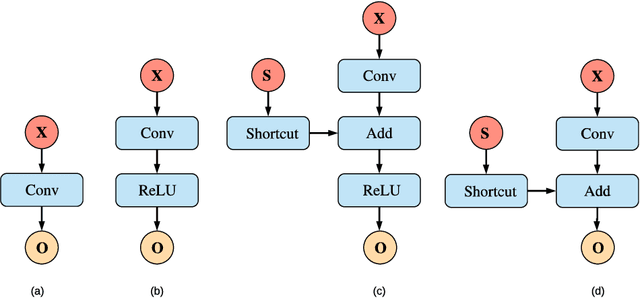



Abstract:This paper addresses a challenging problem - how to reduce energy consumption without incurring performance drop when deploying deep neural networks (DNNs) at the inference stage. In order to alleviate the computation and storage burdens, we propose a novel dataflow-based joint quantization approach with the hypothesis that a fewer number of quantization operations would incur less information loss and thus improve the final performance. It first introduces a quantization scheme with efficient bit-shifting and rounding operations to represent network parameters and activations in low precision. Then it restructures the network architectures to form unified modules for optimization on the quantized model. Extensive experiments on ImageNet and KITTI validate the effectiveness of our model, demonstrating that state-of-the-art results for various tasks can be achieved by this quantized model. Besides, we designed and synthesized an RTL model to measure the hardware costs among various quantization methods. For each quantization operation, it reduces area cost by about 15 times and energy consumption by about 9 times, compared to a strong baseline.
 Add to Chrome
Add to Chrome Add to Firefox
Add to Firefox Add to Edge
Add to Edge